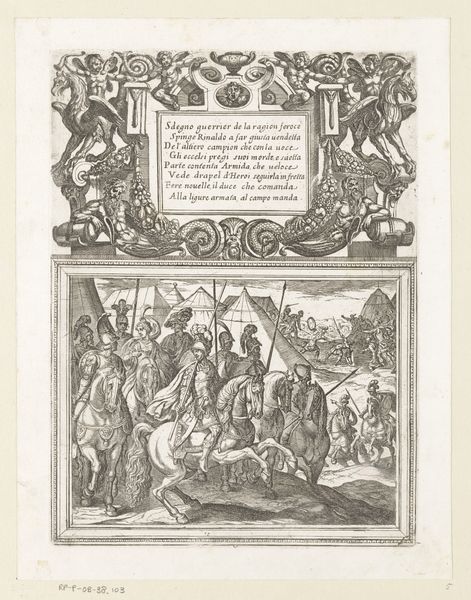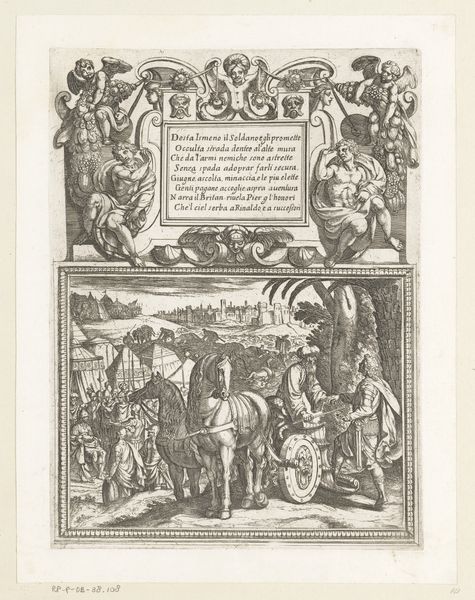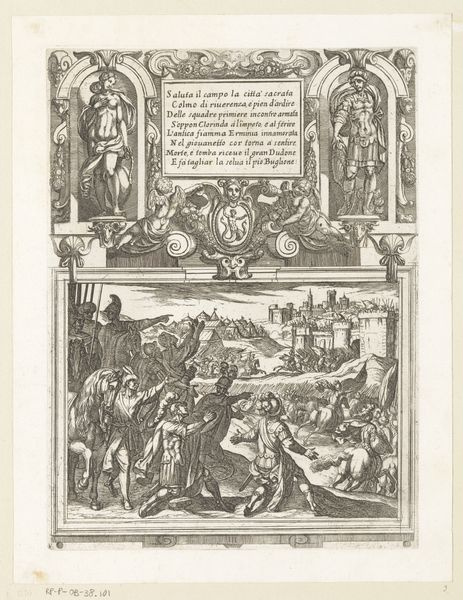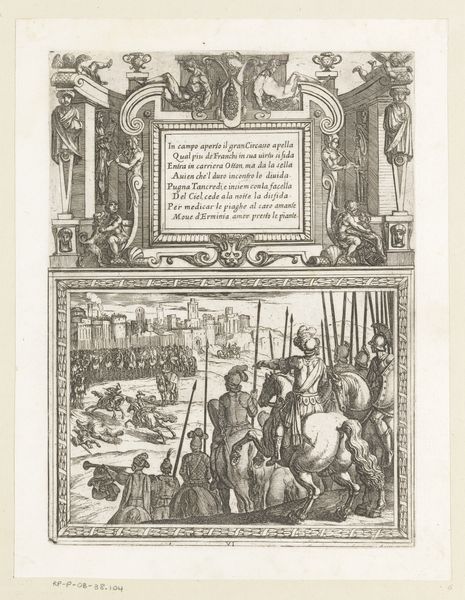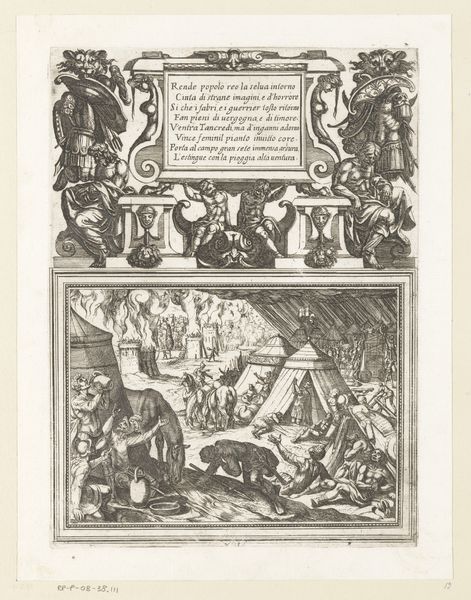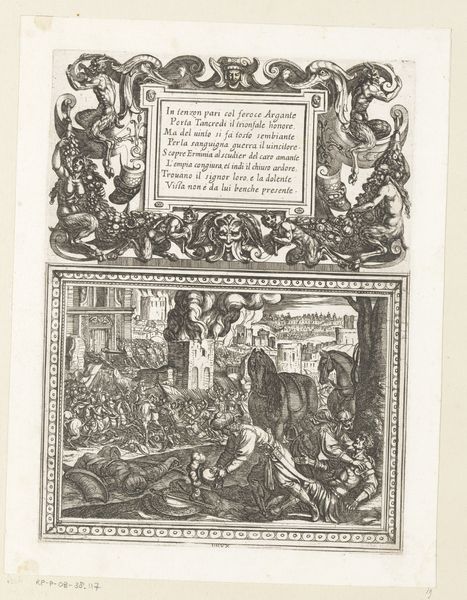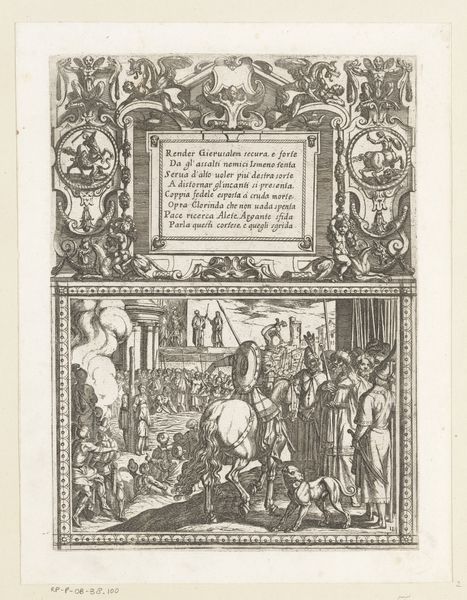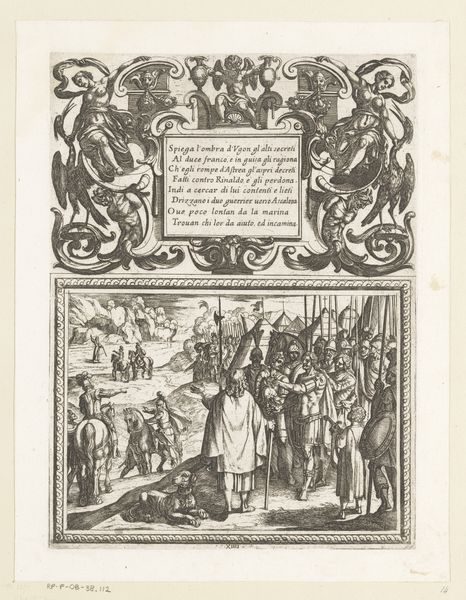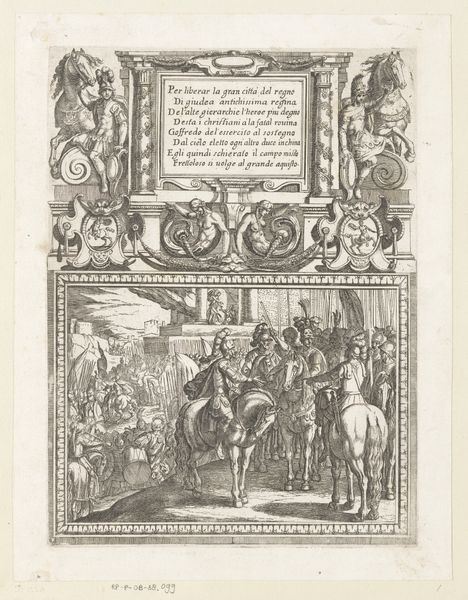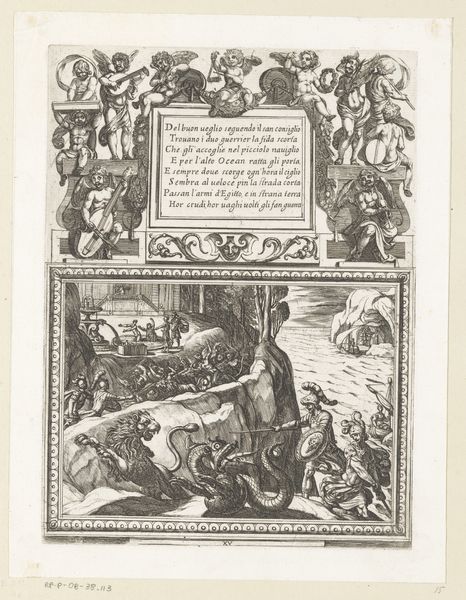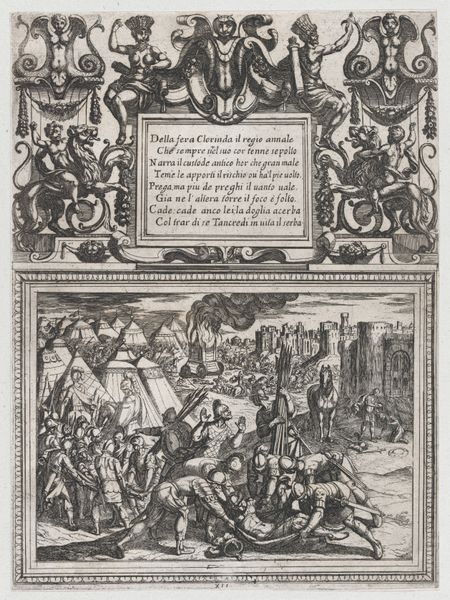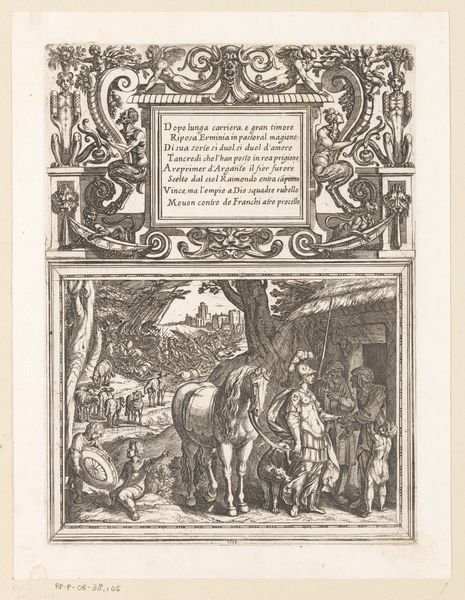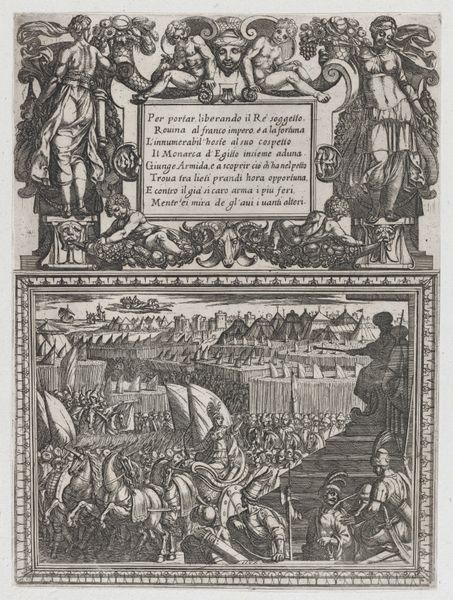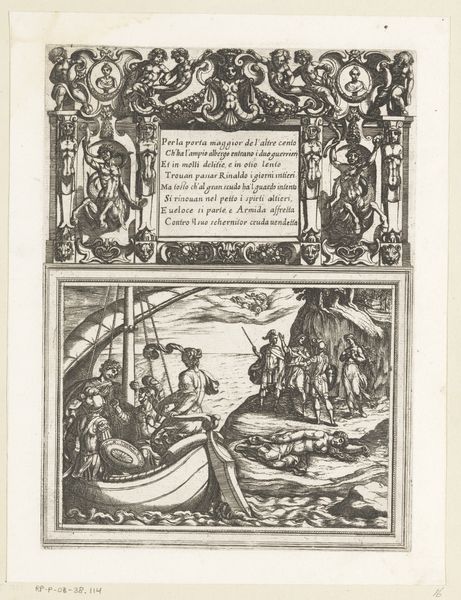
Illustratie bij Canto VIII van Tasso's 'Gerusalemme Liberata' 1565 - 1630
0:00
0:00
antoniotempesta
Rijksmuseum
print, intaglio, engraving
#
aged paper
#
narrative-art
# print
#
intaglio
#
old engraving style
#
traditional media
#
mannerism
#
figuration
#
personal sketchbook
#
history-painting
#
italian-renaissance
#
engraving
Dimensions: height 275 mm, width 204 mm
Copyright: Rijks Museum: Open Domain
Curator: Looking at this aged print, the scene leaps off the page with a flurry of chaotic movement. I see battling figures, spears, tents in the distance. It has such a frenetic energy. Editor: Indeed! What we have here is "Illustratie bij Canto VIII van Tasso's 'Gerusalemme Liberata'," a print dating from somewhere between 1565 and 1630, produced by Antonio Tempesta. As you noticed, it depicts a particularly energetic episode, realized in intaglio—specifically, through engraving. Curator: Intaglio; an apt choice. The deep cuts seem to mirror the harshness of the subject. The visual language is very dense. I can't help but feel a slight detachment from these militaristic values—the sheer violence is so blatantly, unapologetically rendered. Editor: It’s difficult to disconnect such images from a modern sociopolitical reading. While the work showcases elements of Mannerism common for the time, the depiction of power dynamics and aggression makes me question the underlying narrative being presented. How do we view this celebration of conflict, removed from its initial context? Curator: What intrigues me is the almost timeless appeal to a heroicism through warfare; conflict memorialized, given tangible and emotional heft through symbolic imagery and a seemingly distant historical frame. It gives these narratives enduring power. Editor: Yet the glorification feels...incomplete today. Perhaps the work can serve now as an examination of how power is performed, highlighting the destructive elements inherent within this system. Do the frames containing the literary element further contain the image? Or do they work against each other in practice? Curator: It highlights how imagery retains embedded and powerful meanings, constantly being reshaped by successive viewers across time and space, wouldn’t you agree? Editor: Precisely. An artwork created during the late Renaissance carries multiple significances, some perhaps contradictory when viewed with present-day lenses. Curator: A potent reminder that historical artifacts don't just passively exist—they provoke. Editor: They are ongoing conversations that need continual analysis and reflection.
Comments
No comments
Be the first to comment and join the conversation on the ultimate creative platform.
